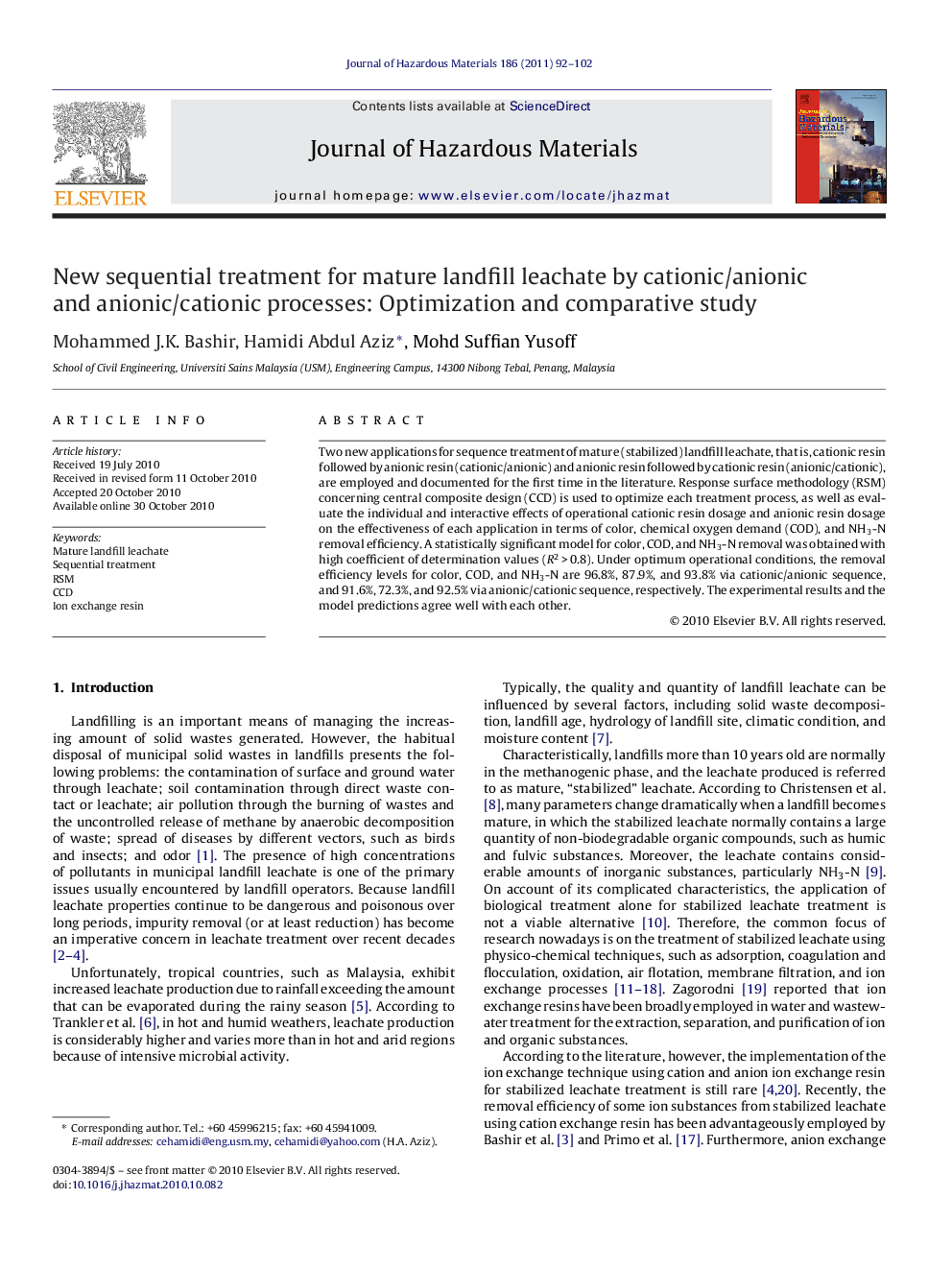| Article ID | Journal | Published Year | Pages | File Type |
|---|---|---|---|---|
| 10372700 | Journal of Hazardous Materials | 2011 | 11 Pages |
Abstract
Two new applications for sequence treatment of mature (stabilized) landfill leachate, that is, cationic resin followed by anionic resin (cationic/anionic) and anionic resin followed by cationic resin (anionic/cationic), are employed and documented for the first time in the literature. Response surface methodology (RSM) concerning central composite design (CCD) is used to optimize each treatment process, as well as evaluate the individual and interactive effects of operational cationic resin dosage and anionic resin dosage on the effectiveness of each application in terms of color, chemical oxygen demand (COD), and NH3-N removal efficiency. A statistically significant model for color, COD, and NH3-N removal was obtained with high coefficient of determination values (R2Â >Â 0.8). Under optimum operational conditions, the removal efficiency levels for color, COD, and NH3-N are 96.8%, 87.9%, and 93.8% via cationic/anionic sequence, and 91.6%, 72.3%, and 92.5% via anionic/cationic sequence, respectively. The experimental results and the model predictions agree well with each other.
Related Topics
Physical Sciences and Engineering
Chemical Engineering
Chemical Health and Safety
Authors
Mohammed J.K. Bashir, Hamidi Abdul Aziz, Mohd Suffian Yusoff,
